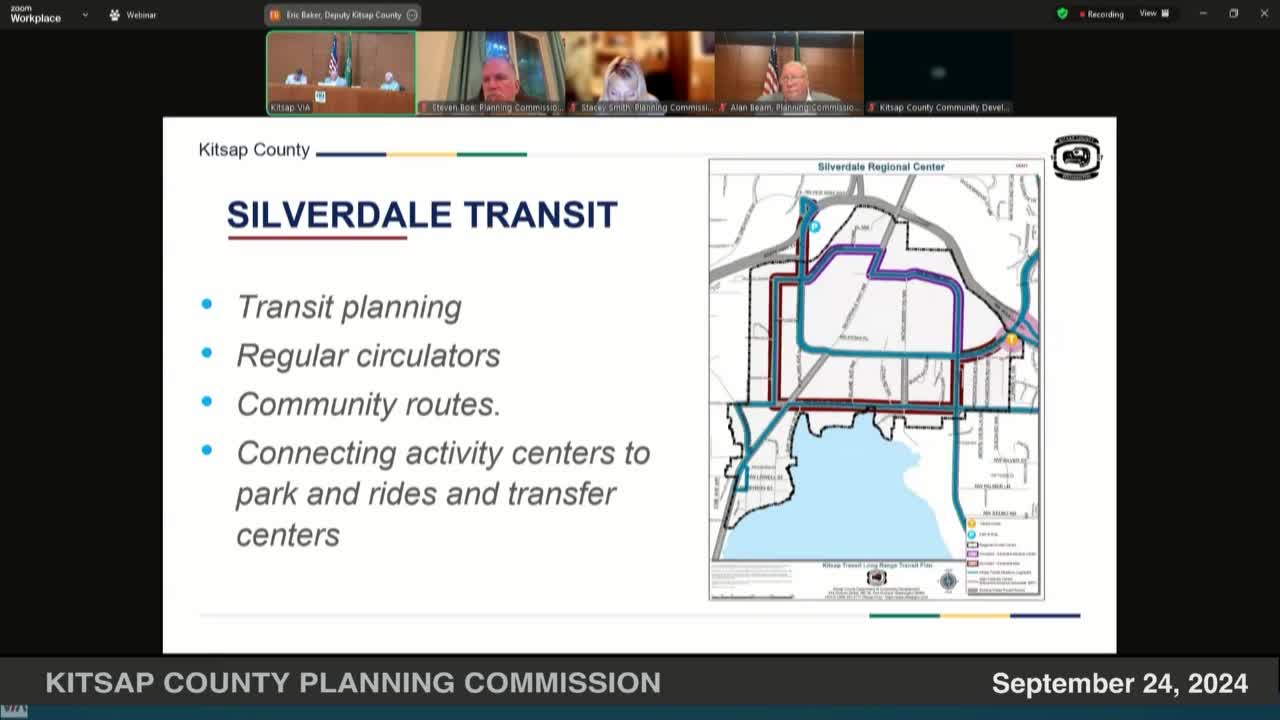Kitsap County plans ambitious growth amid housing challenges
September 24, 2024 | Kitsap County, Washington
This article was created by AI summarizing key points discussed. AI makes mistakes, so for full details and context, please refer to the video of the full meeting. Please report any errors so we can fix them. Report an error »

In a recent government meeting, officials discussed the pressing need for improved transit connectivity and housing development in Kitsap County. The conversation highlighted the challenges faced by residents traveling between North and South Kitsap, where limited bus services can lead to lengthy travel times. The need for enhanced transit infrastructure, including park-and-ride facilities and transfer centers, was emphasized as essential for better accessibility to community activity centers.
The comprehensive plan under discussion aims to align with the Growth Management Act, which mandates a balance among various goals, including economic development, environmental protection, and housing availability. Officials acknowledged the complexities of these competing priorities, particularly in light of climate change and the need for both affordable and market-rate housing. The plan seeks to address the housing crisis while ensuring environmental safeguards within urban growth areas.
Kitsap County is planning for an increase of 6,000 residents beyond its current population allocation, necessitating a significant rise in multifamily housing units, particularly in the Silverdale and central Kitsap areas. This ambitious housing strategy aims to meet the dual demands of population growth and commerce-directed housing allocations, a challenge that local jurisdictions are now facing under new state guidance.
Employment figures indicate a minor shortfall of 146 positions, which officials consider manageable. The county's strategy includes minimal expansions of urban growth areas to support industrial employment, focusing on existing industrial zones to foster economic growth.
The meeting also addressed demographic changes within the county, noting a 5% increase in the non-Caucasian population, particularly among Hispanic and African American communities. This shift underscores the importance of diversity, equity, and inclusion initiatives within the county's operations and housing policies. Officials stressed the need for equitable access to housing and services across all urban growth areas, reflecting a commitment to fostering a diverse and inclusive community.
Overall, the discussions underscored the county's commitment to balancing growth with environmental stewardship and social equity, as it navigates the complexities of urban planning in a changing demographic landscape.
The comprehensive plan under discussion aims to align with the Growth Management Act, which mandates a balance among various goals, including economic development, environmental protection, and housing availability. Officials acknowledged the complexities of these competing priorities, particularly in light of climate change and the need for both affordable and market-rate housing. The plan seeks to address the housing crisis while ensuring environmental safeguards within urban growth areas.
Kitsap County is planning for an increase of 6,000 residents beyond its current population allocation, necessitating a significant rise in multifamily housing units, particularly in the Silverdale and central Kitsap areas. This ambitious housing strategy aims to meet the dual demands of population growth and commerce-directed housing allocations, a challenge that local jurisdictions are now facing under new state guidance.
Employment figures indicate a minor shortfall of 146 positions, which officials consider manageable. The county's strategy includes minimal expansions of urban growth areas to support industrial employment, focusing on existing industrial zones to foster economic growth.
The meeting also addressed demographic changes within the county, noting a 5% increase in the non-Caucasian population, particularly among Hispanic and African American communities. This shift underscores the importance of diversity, equity, and inclusion initiatives within the county's operations and housing policies. Officials stressed the need for equitable access to housing and services across all urban growth areas, reflecting a commitment to fostering a diverse and inclusive community.
Overall, the discussions underscored the county's commitment to balancing growth with environmental stewardship and social equity, as it navigates the complexities of urban planning in a changing demographic landscape.
View full meeting
This article is based on a recent meeting—watch the full video and explore the complete transcript for deeper insights into the discussion.
View full meeting
